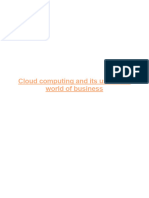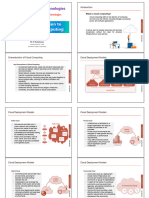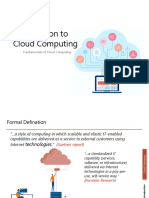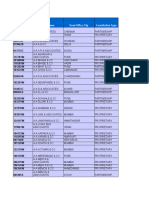0% found this document useful (0 votes)
12 views3 pagesCloud Computing
Cloud Computing delivers resources over the internet, allowing organizations to avoid heavy infrastructure investments while benefiting from scalability, flexibility, and cost-effectiveness. It encompasses various service models such as IaaS, PaaS, and SaaS, and deployment models including public, private, and hybrid clouds. Key considerations include security, compliance, and the future integration of emerging technologies like AI and edge computing.
Uploaded by
RajKumarCopyright
© © All Rights Reserved
We take content rights seriously. If you suspect this is your content, claim it here.
Available Formats
Download as DOCX, PDF, TXT or read online on Scribd
0% found this document useful (0 votes)
12 views3 pagesCloud Computing
Cloud Computing delivers resources over the internet, allowing organizations to avoid heavy infrastructure investments while benefiting from scalability, flexibility, and cost-effectiveness. It encompasses various service models such as IaaS, PaaS, and SaaS, and deployment models including public, private, and hybrid clouds. Key considerations include security, compliance, and the future integration of emerging technologies like AI and edge computing.
Uploaded by
RajKumarCopyright
© © All Rights Reserved
We take content rights seriously. If you suspect this is your content, claim it here.
Available Formats
Download as DOCX, PDF, TXT or read online on Scribd
/ 3



























































































